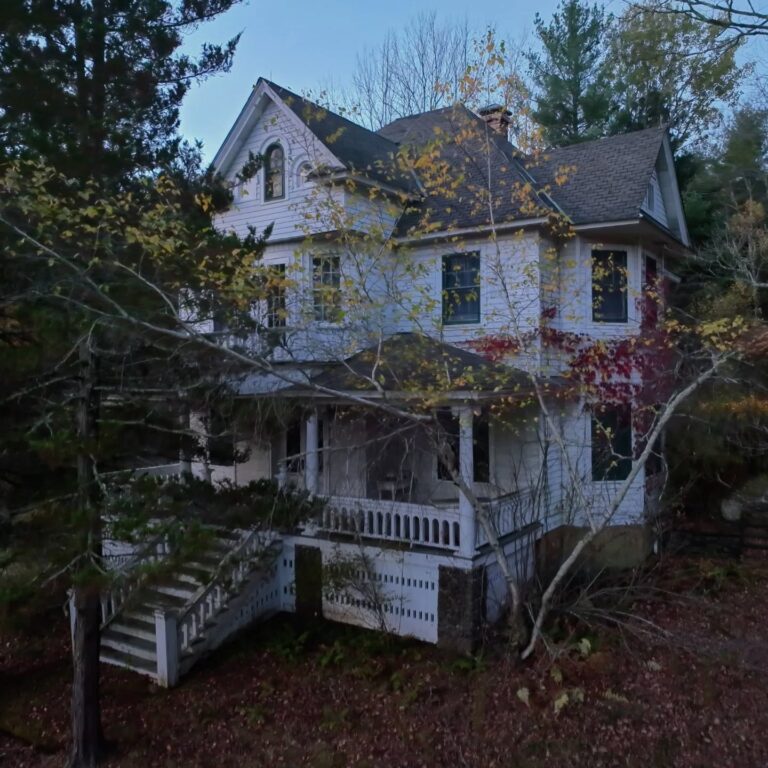St. Louis has a rich history of abandoned hospitals, with many having their origins as far back as the late 19th and early 20th centuries. One of St. Louis’ most well-known abandoned hospitals is the St. Louis State Hospital, which opened initially as the St. Louis County Insane Asylum back in 1869. The hospital’s original purpose was for the care of the mentally ill, but as time went on, it became overcrowded and short-staffed, and living conditions for patients deteriorated.
Ghost stories and legends surrounding St. Louis’ abandoned hospitals
St. Louis’s abandoned hospitals have a plethora of chilling legends and stories that have been passed down through generations. One of the most popular legends is that of St. Louis State Hospital’s “Crying Lady.
Another legend is that of City Hospital, where ghosts of Civil War soldiers are rumored to haunt its property. The hospital took in wounded soldiers from both sides during the Civil War, and many died there. Ghostly figures dressed in turn-of-the-century attire have been seen by visitors at the abandoned hospital, as well as unexplained footsteps and muffled whispers. These sightings have added further to the mystique of the abandoned hospital, drawing thrill-seekers and paranormal investigators from all over the globe.
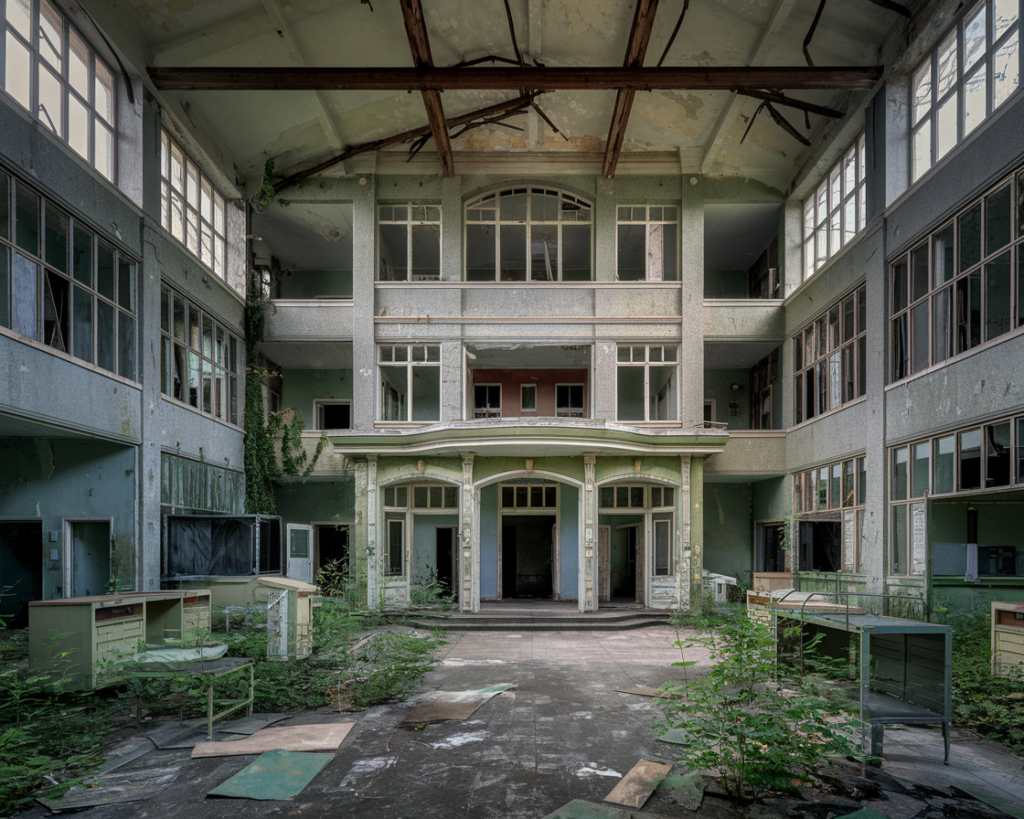
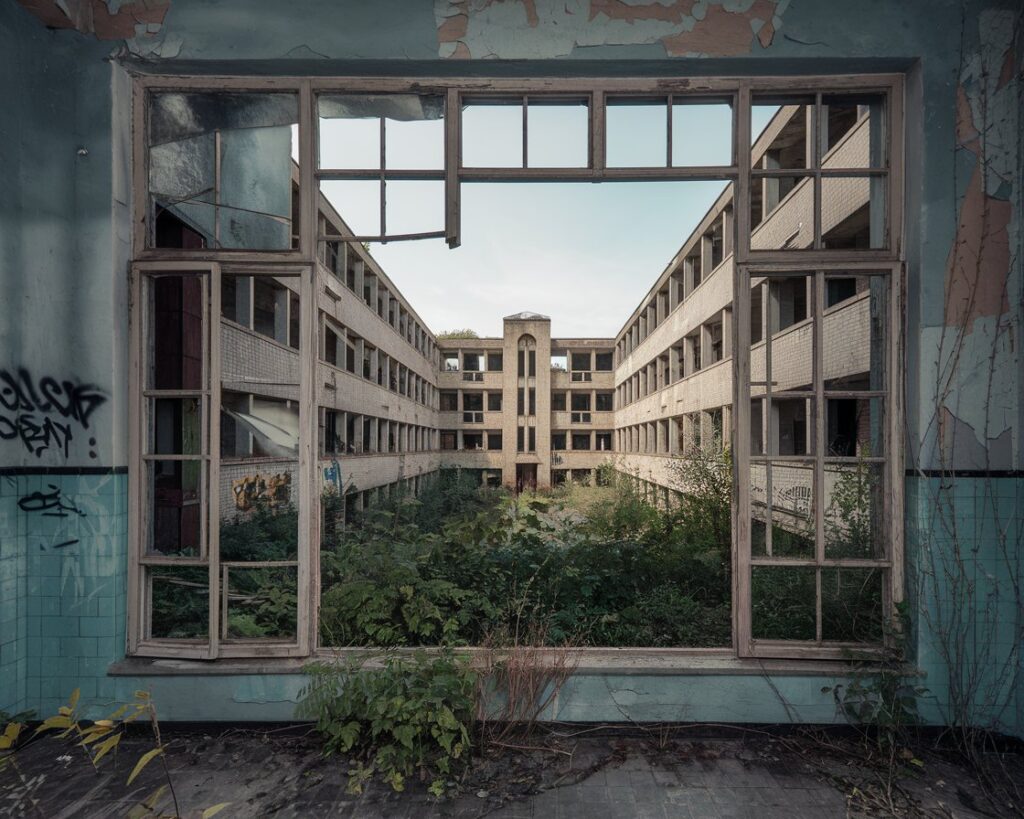
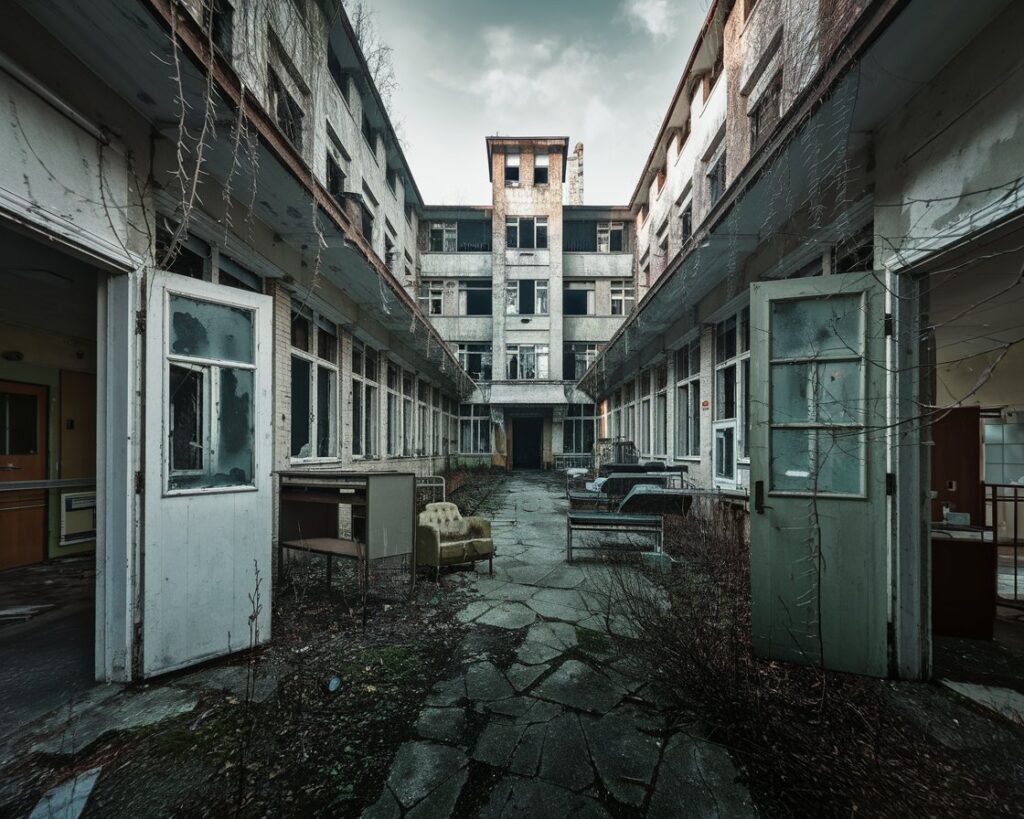
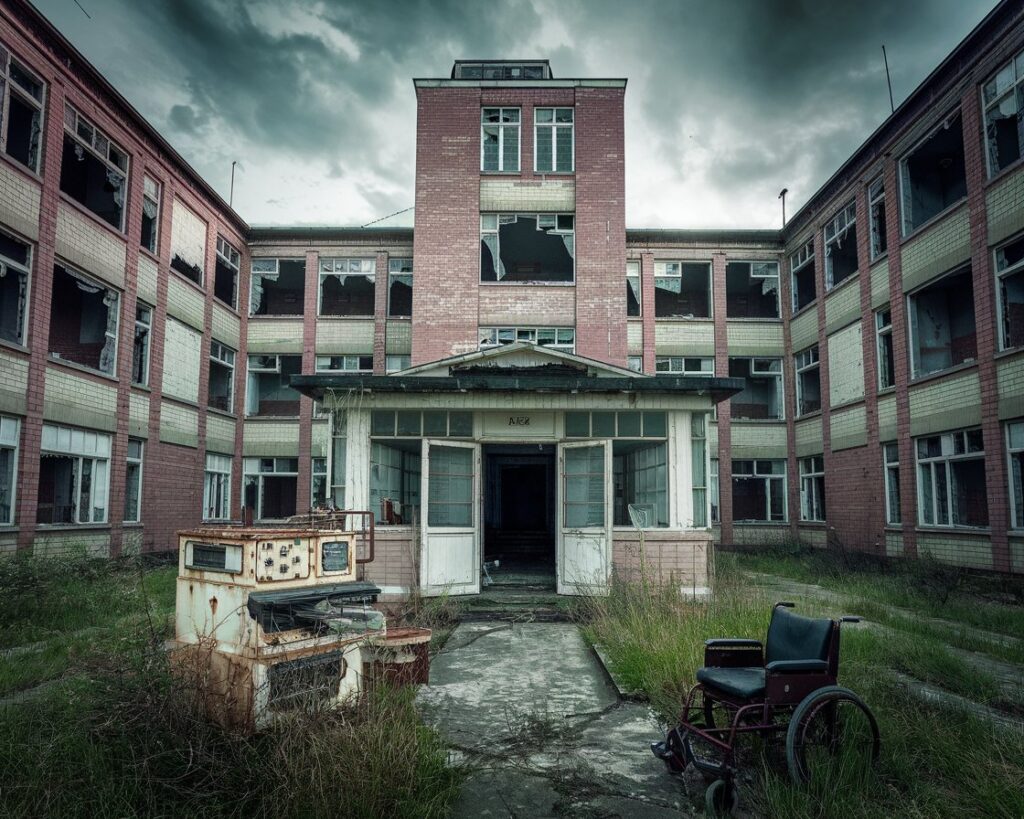

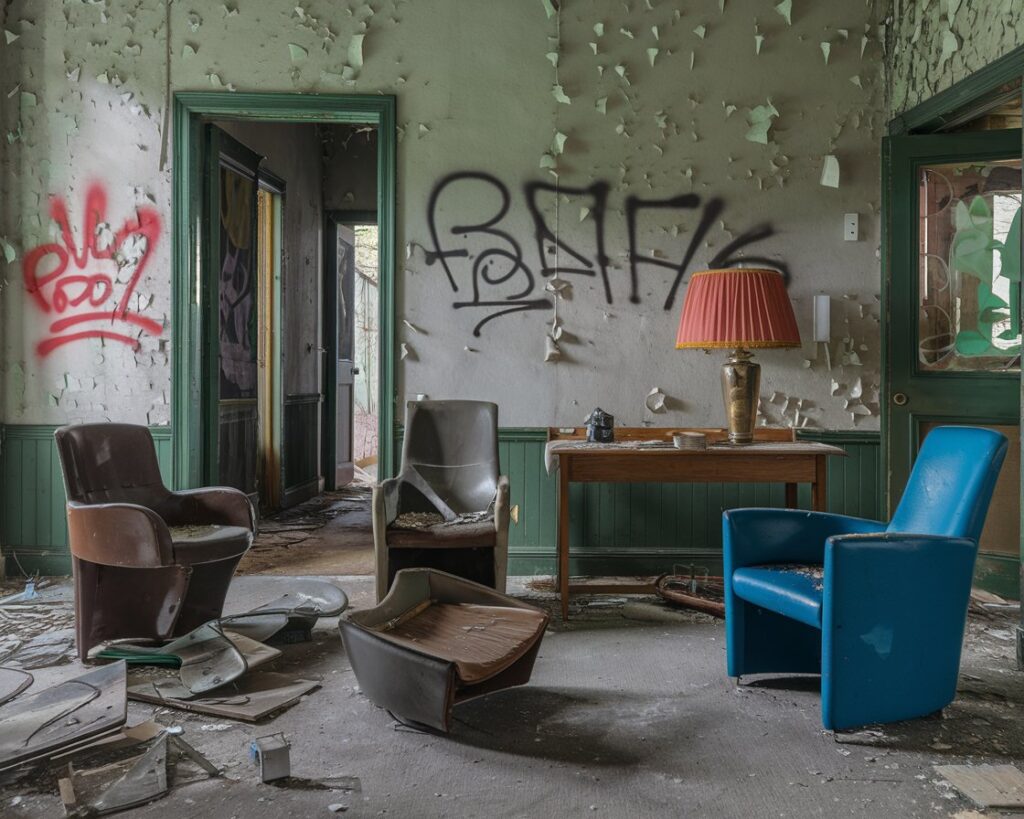
The Current Status of Abandoned Hospitals in St. Louis
Abandoned hospitals St. Louis today are a grim reminder of what they once were, with broken facades and overgrown grounds. Despite their condition, these abandoned hospitals are still a point of fascination for curious spectators and urban explorers interested in their history and reputation for being spooky. However, their condition is a risk for public safety, as they are prone to collapse and are filled with toxic substances such as asbestos and lead-based paints. Due to this, there have been proposals that these abandoned hospitals either be demolished or repurposed for safer uses.
The impacts on the community around derelict hospitals are many.
The prevalence of abandoned hospitals in St. Louis has also had an impact on the community, both positive and negative. On one hand, the buildings offer an insight into the history of St. Louis and form a part of its cultural heritage. They also offer a source of tourist attraction for urban explorers and visitors, and they generate income into local businesses and into the city’s economy. However, abandoned hospitals also negatively affect society. The state of disrepair of these buildings poses a safety hazard for surrounding residents, as they may collapse and expose the community to haardous materials.
The Haunting Legacy of St. Louis’s Abandoned Hospitals: An Unsettling Odyssey
Vincent’s Hospital, where a dark reputation has preceded it, to the eerie remnants of the Alexian Brothers Hospital, these abandoned hospitals are a testament to the city’s medical history and the spirits that still haunt their walls.These abandoned hospitals have a dark history, one that stretches as far back as the turn of the 20th century when they were at the forefront of medical innovation. St. Vincent’s Hospital, for example, was a pioneer hospital for the cure and treatment of tuberculosis, a disease that ravaged the city through the early 1900s. The hospital had cutting-edge treatments and research, but as medical technology caught up, it fell out of use and ultimately into decay.The once bustling corridors are now empty and silent, save for the creaking boards and stifled echoes that fill the emptiness.
Exploring these abandoned hospital buildings is not for the faint-hearted. Dark hallways and dark corners create a foreboding as well as intriguing atmosphere.Moreover, there is a genuine chance for injury or accident when exploring abandoned hospitals. The dim, crumbling interiors create a perfect scenario for tripping and falling, leading to serious injury, if not something worse. Moreover, there are also broken glass, sharp objects, and other dangers that raise one’s risk for injury when exploring these dilapidated buildings. In spite of all these dangers, many thrill-seekers still risk venturing into these abandoned hospitals, drawn into their spooky atmosphere and history.
The historic structures possess significant architectural and historical significance
and are well worth saving and restoring. The St. Louis Preservation Board and local historical societies are some of those involved in bringing awareness to saving these abandoned hospitals for future generations. Efforts are being made to secure funds for restoration efforts and to advocate for their safeguard against demolition and further decay. Preserving these historic hospitals is not without its challenges, however. Restoring can be expensive, especially for buildings that have been neglected for several decades.
St. Louis’ abandoned hospitals have a plethora of urban legends and ghost stories.
St. Louis’s empty hospitals are filled with urban myths and ghost stories that have captured the imagination of locals and visitors alike. Paranormal activity, unexplained events, and sightings have been passed down over the years, adding to the mystique of these abandoned buildings.
These urban legends and ghost stories have made St. Louis’s abandoned hospitals a destination for paranormal fans and thrill-seekers. Some visitors visit these crumbling buildings with hopes for a paranormal experience or a glimpse into the afterlife. While skeptics may dismiss these stories as mere folklore, nobody can deny their impact on the public perception of these abandoned hospitals. Whether one is a believer in the paranormal or not, nobody can deny that these urban legends add another level of intrigue to the already eerie history of these abandoned hospitals.
These abandoned hospitals have a devastating effect on communities near St. Louis.
The presence of vacant hospitals has also had a significant impact on surrounding communities throughout St. Louis. These abandoned buildings serve as a reminder of a previous time, evoking nostalgia and sadness among locals for when these hospitals operated. Additionally, their abandonment has also contributed to blight and disinvestment into their specific neighborhoods, further exacerbating economic issues within already troubled communities.
Furthermore, abandoned hospitals have also played a part in influencing community well-being and public safety. These buildings have a tendency to attract criminal activity such as vandalism, pilferage, and illegal occupation by squatters, which compromise neighboring residents’ safety and security. Furthermore, their condition also presents environmental hazards such as exposure to asbestos and mold infestation, which have a detrimental impact on public health.
Despite all these challenges, there is also potential for a beneficial impact through historic preservation initiatives for St. Louis’ vacant hospitals. By rehabilitating these facilities and repurposing them into new functions, they can act as catalysts for community development and economic growth. Adaptive reuse of these historic buildings can create new opportunities for affordable housing, job development, and cultural enrichment for their communities.
The Future of St. Louis’ Abandoned Hospitals: Should They Be Renovated Or Razed
St. Louis’ abandoned hospitals’ fate remains undecided as stakeholders argue whether they should either be renovated or demolished. While some argue that historic buildings such as these must be preserved for their historic and architectural value, there are also those who argue that their state of disrepair renders them beyond repair and a blight on their neighborhoods.On the contrary, demolition can also be seen as a more practical solution for ridding the area of the blight that these dilapidated buildings have brought about. However, this also has a set of problems such as environmental cleanup and resistance from preservationists who insist on keeping these historic buildings intact.
Ultimately, a balance will have to be struck between preservation and pragmatism when determining what will become of St. Louis’s abandoned hospitals. It will require coordination among preservation societies, government agencies, community members, and developers weighing the pros and cons of each option and making decisions that will benefit both the historic value of these buildings and their communities’ well-being. Historic preservation for abandoned hospitals has potential for renewal for their communities as well as a tribute for their place in history. The future for these abandoned hospitals hangs in the balance as stakeholders grapple with renovation versus demolition, but one thing is certain – their haunting past will continue to inspire imagination for years to come.
Efforts at Preserving or Repurposing St. Louis’ Abandoned Hospitals
There have been efforts over the past few years to salvage or reuse St. Louis’ empty hospitals with a view to reversing their detrimental impact on society. Preservationists have advocated for adaptive reuse of the buildings, with suggestions that they might be reused as affordable apartments, community centers, or mixed-use projects that benefit the neighboring community.While exploring abandoned hospitals may seem a thrilling activity, one must not forget that there are risks and precautions one must exercise when one ventures into such places.
The Future of St. Louis’ Vacant Hospitals
St. Louis’ fate for its vacant hospitals is uncertain, with controversy surrounding whether they should remain as historic buildings that are a part of St. Louis’ heritage, or whether they should be demolished because they are deteriorating, posing a potential risk for public safety, and redeveloped again.Ultimately, finding a balance between preserving St. Louis’ history and ensuring public safety will ultimately determine what will become of these abandoned hospitals. Whether they will be repurposed for safer uses or torn down for new developments, their place in history should not be forgotten and their impact on the surrounding community should not be lost.












